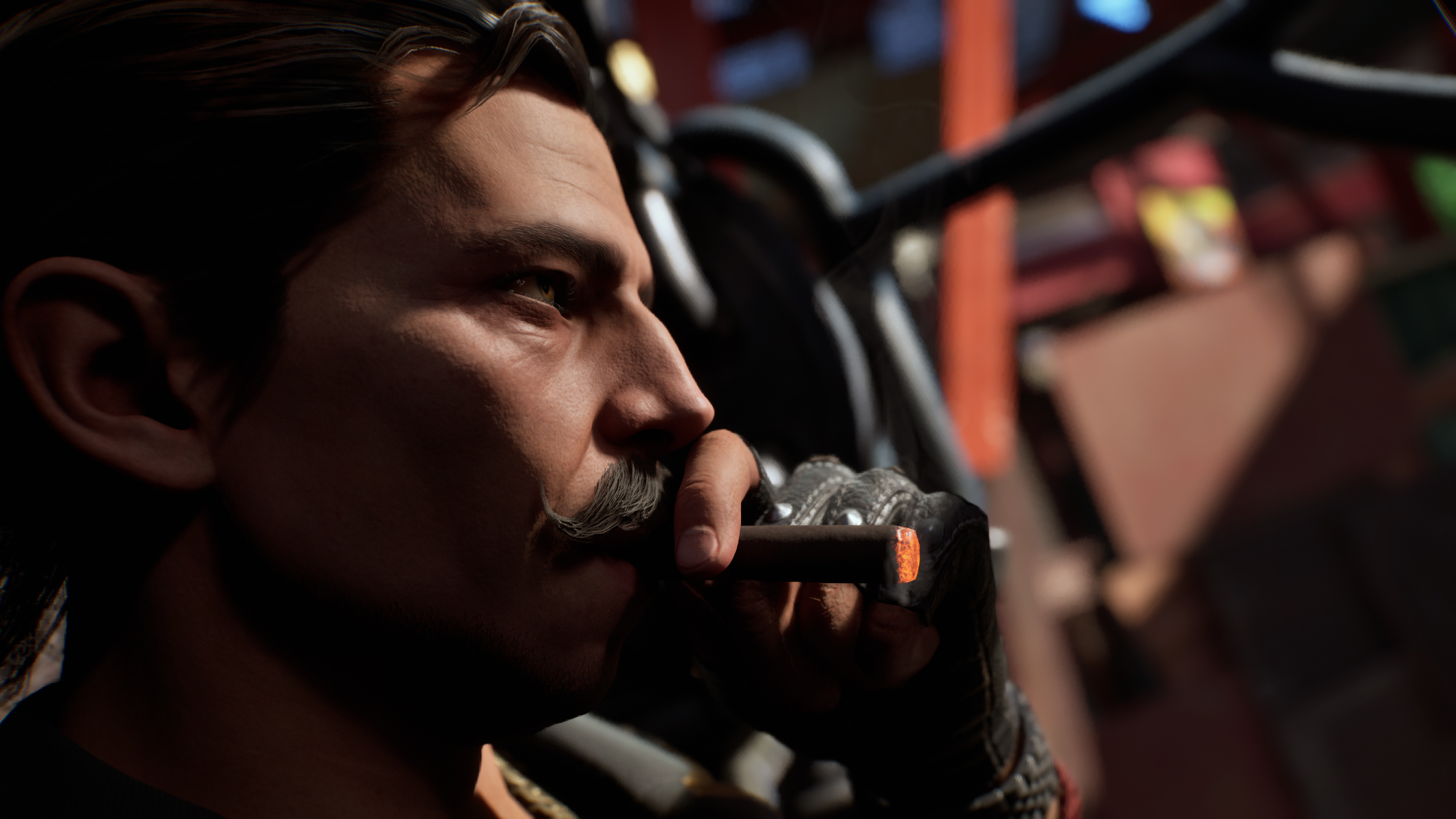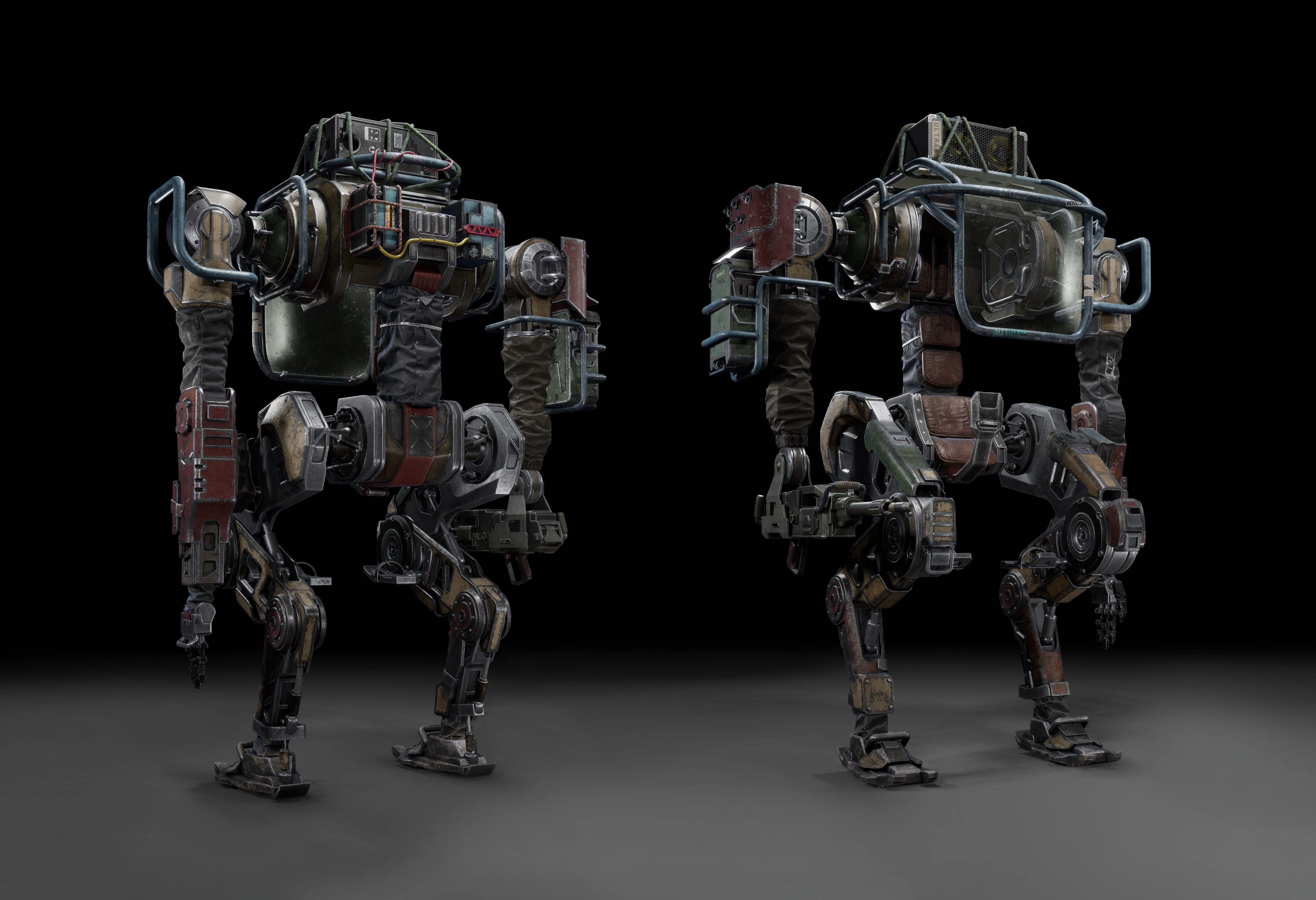Upcoming game SPINE is channeling an action movie aesthetic for its game design and art direction, an approach that also influences its boss design. Creating characters for video games that ignite players imaginations, fit the needs of the game and are plausible for the budget is the fine line the team behind gun-fu game SPINE is treading.
We've already caught up with developer Nekki's art director and discovered how Unreal Engine is enabling the team to deliver an ambitious game, as well as how they technicians have developed a new intelligent cinematic game camera for SPINE, but what about bosses? An action game like SPINE needs its boss character designs to excite.
Below I catch up with Dmitry Oshchepkov, Senior Core Gameplay Designer at Nekki, who reveals how the studio approaches lore, animation and design when it comes to SPINE's bosses. While the approach is specific to SPINE, I'm sure you can draw inspiration for your own projects.
Creating boss characters for SPINE

"When creating a boss, we focus on the core principles of the project," says Dmitry Oshchepkov. These four key pillars are, "gun-fu combat, impressive and realistic animations, cinematic aesthetics, a captivating combat system, and a strong sense of 'I am the hero'."
For bosses character designs the team of artists and gameplay designers add unique pillars to make them stand out from the fodder players beat and shoot through. This incudes, says Dmitry, the "wow factor", adding: "the boss should create moments that impress and surprise the player"; .Memorability – "the boss should leave a lasting impression on the player"; .Unique behaviour and mechanics – "each boss introduces new elements, making every fight feel fresh and distinct"; Competence – "the boss needs to feel like a skilled and dangerous opponent"; and Challenge and fun – "the fight should be challenging but also rewarding and enjoyable".
Dmitry tells me the team achieve these pillars through regular reviews, iterations on a design, and multiple play-tests with a wide mix of people in the Nekki studio; all the feedback is then used to refine the designs.
"Each week, we end with a play-test of the boss’s latest iteration to see how it has improved," shares Dmitry. "This process helps us align visual elements with gameplay mechanics, creating a cohesive and engaging experience."
Get the Creative Bloq Newsletter
Daily design news, reviews, how-tos and more, as picked by the editors.
Storytelling and character design for SPINE

That's the overview, the big picture of how a boss design works in SPINE, but where to begin the detail of bring that character to life? Dmitry explains each boss design begins with the development of their lore, telling me how the writer develops the boss’s backstory, motivation, and character. This is then aligned with the game designer, producer, and artists to ensure everyone is on the same page.
"Next," he says, "the writer identifies the key character traits, the 'anchors', that help the development team stay in sync," and shares the how these anchors are divided into three layers:
- Outer layee What’s most visible about the boss’s character, communicated through design, mechanics, visuals, and voice. These are the most important traits, like 'teenage schoolgirl' or 'firearms master'.
- Middle layer Traits that influence the visual design but have less impact on gameplay. These could include tags like 'emotional' or 'show-off'.
- Inner layer The most subtle traits, typically used in dialogue or cutscenes, like 'insecure' or 'traumatic childhood'.
Dmitry then explains, "Once all teams approve the final concept, the active work on the visual design and gameplay begins. This process ensures that the boss is not only visually impressive but also fits seamlessly into the game’s overall narrative."
Creating boss animation in SPINE
When it comes to the granular detail of creating a compelling boss character design, and the animation that sets the character apart from others in the game, Dmitry says it begins by reflecting on the principles of the team, "We are a studio that’s, in the best way, obsessed with cool and realistic animations," he says, before explaining creating the animation is a collaboration between the game's designer and animator.
"It starts with brainstorming the boss's mechanics," begins Dmitry. "The animator and game designer work together to decide what the boss should do to match the narrative and gameplay pillars. We define key gameplay elements like attack sets, abilities, and movement patterns."
He adds: "Then comes a long stage of prototyping and iteration. At this point, we often use existing animations as placeholders while we test, but the animator ensures that these will be reworked into the final animations. This stage involves many playtests, and after each test, we often return to the drawing board to refine the core gameplay elements."
Dmitry tells me, once the core gameplay is finalised, the team can start working on the animation brief together, finding the boss's unique identity. The team has a unique 'scale' of where to place each boss design, which includes novice / professionalism, power / agility, minimal / maximal gun-fu elements, common / original – "does the boss move like a regular human or have unique traits?" says Dmitry –, and finally, comical / menacing appearance.
The boss doesn’t need to be at the extremes of these scales, "what’s important is that each boss has a unique combination of these traits," reflects Dmitry.
He adds: "Once the first animation pass is ready, it’s integrated into the game and tested in action. If issues arise, we refine the brief and iterate until we achieve the desired result. This process ensures that each animation not only looks good but also supports the gameplay."
The challenge of designing for gun-fu gameplay

With such a detailed character creation process, I ask Dmitry what the challenges are for crafting a boss players will love to face-off against. He shares how there are a number tricky obstacles the team needs to confront and solve for developing characters, and particularly bosses, for SPINE.
He says the challenges include, "Creating a boss that is visually memorable and impressive". And then, "Balancing difficulty and clarity, the boss fight needs to be challenging and dynamic but also easy for the player to read".
Dmitry continues: "Combining realism and physicality with original mechanics and visual indicators that remain functional without feeling too artificial [and] The specific challenges of gun-fu; ranged combat requires extra work since shooting happens at a distance and involves less visible animation".
When it all comes together, with close collaboration, deft lore, and meeting the challenges of animating for gun-fu, SPINE's boss designs are "visually striking, have impactful attacks, and are enjoyable to fight", reflects Dmitry.


If SPINE has given you the itch to create, then read our guide to the best laptop for game development and the best 3D modelling software, and start creating.

Thank you for reading 5 articles this month* Join now for unlimited access
Enjoy your first month for just £1 / $1 / €1
*Read 5 free articles per month without a subscription

Join now for unlimited access
Try first month for just £1 / $1 / €1

Ian Dean is Editor, Digital Arts & 3D at Creative Bloq, and the former editor of many leading magazines. These titles included ImagineFX, 3D World and video game titles Play and Official PlayStation Magazine. Ian launched Xbox magazine X360 and edited PlayStation World. For Creative Bloq, Ian combines his experiences to bring the latest news on digital art, VFX and video games and tech, and in his spare time he doodles in Procreate, ArtRage, and Rebelle while finding time to play Xbox and PS5.
